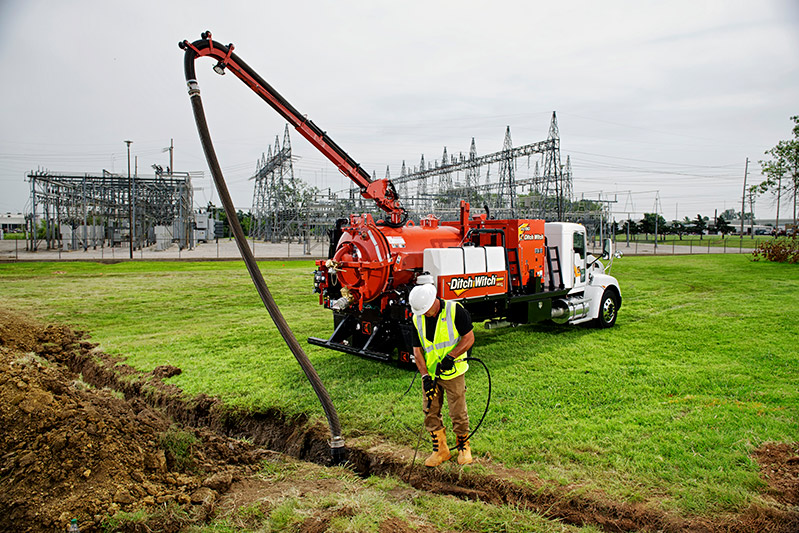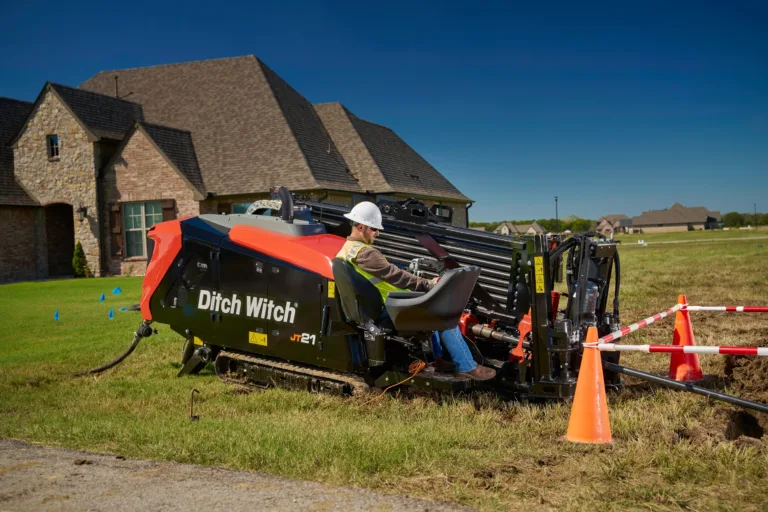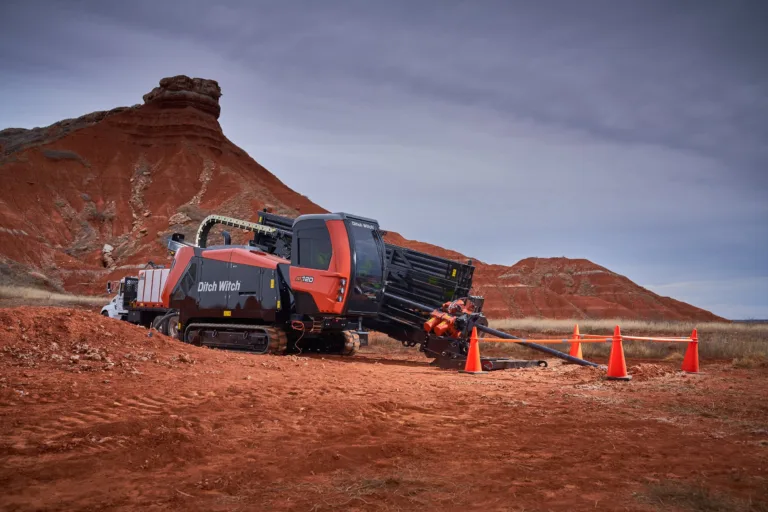Selecting the Right Vacuum Excavator for the Growing HDD Industry

The underground construction industry is continuously growing, especially as the trend toward residential fiber connectivity surges and becomes an integral part of developing cities across the nation.
When thinking of the typical equipment needed for underground installation on urban job sites, horizontal directional drill (HDD) rigs are usually top of mind. However, vacuum excavators also play an important role.
Vacs Built for HDD Jobsite Versatility
The versatile vacuum excavator has become a familiar sight on underground utility projects. These portable machines are used for dual purposes on HDD jobsites
First, they support damage prevention. Specifically, they are used for potholing, or daylighting, to help expose and visibly confirm the exact location of buried utilities. On today’s HDD jobsites, this process is quickly becoming the norm, and in many circumstances, required by contractors.
Cross bores — or intersections of underground utilities — are easily one of the biggest industry challenges, especially as infrastructure upgrades and fiber build-out continues. To combat risk of damaging existing utility lines, soft excavation is used to create potholes in front of the drill head so operators can see it pass the utility and visually verify no damage occurred.
Second, the vacuum capability on the machine is widely used on HDD jobsites to remove excess drilling fluids that escape from bore holes. The powerful, mobile vacuums can easily clean out vaults, manholes, cuttings made by pavement saws, and virtually any other site clean-up task.
Many jobsites today have tightening restrictions regarding drilling fluids. And vacuum excavators can help operators contain and properly dispose of drilling fluids, keeping sites as clean as possible.
Unearthing the Best Vac for the Job
Vacuum excavators come in a variety of shapes and sizes to fit the need of virtually any HDD jobsite size. On urban sites, where much of the fiber build-out and infrastructure upgrades are happening today, some of the smaller truck-mounted vacuum excavators are an ideal fit.
These machines have a compact footprint, best suited for the tight jobsites often found in urban areas. Also, truck vacuum excavators designed with capacity to tow and haul other equipment to a job site can help operators save costs by requiring fewer vehicles onsite. The Ditch Witch truck vacuum excavators are among few machines on the market with this capability.
In some situations, however, operators may find trailer-mounted vacs are a better fit for the job. If an HDD job will take several days, stowing a trailer-mounted vac onsite will decrease the investment for the contractor. Additionally, trailer vacs can be more easily moved onto rights-of-way and over curbs to stay out of traffic on congested job sites.
Beyond trailer- vs. truck-mounted vacuum excavators, contractors and operators must also consider hydro- vs. air-excavation techniques.
Hydro-excavation using pressurized water is a more widely accepted form of excavation and can be used in a wide range of soil conditions. Also in certain soil conditions, it tends to keep the hose cleaner by washing out soil buildup, allowing excavated debris to pass through more easily without clogging.
However, hydro-excavation requires operators to dispose of drilling fluids and replenish water sources. Some states also are restricting its use near highways and railroads, or under certain environmental conditions.
As restrictions on drilling fluid disposal continue to tighten and the number of verified disposal sites dwindles, many operators are turning to air-excavation on jobsites. This method allows operators to break up compressed soil with air and vacuum dry spoils, which can be reused as backfill without the need for disposal. Contractors can save time and money without extra dumping fees, and reduce the downtime associated with driving away from the job to disposal sites.
Leading equipment manufacturers design vacuum excavators with both air- and hydro-excavation capabilities to meet the needs of a variety of HDD jobsites. For example, the new line of Ditch Witch FXT Air truck vacuum excavators is powered with air and water systems, giving operators flexibility to adapt to changing job-site demands and effectively perform in a full range of soils.
Additionally, best-in-class equipment manufacturers have vacuum excavators to meet the needs of any job – from truck-mounted excavators for urban underground, utility job sites, to trailer-mounted excavators for elongated projects.
Case-in-point: Electric Cooperative Uses Vacuum Excavator to Avoid Buried Utilities
Tri-County Electric Cooperative (TCEC) is a Touchstone Energy cooperative based in Hooker, Okla., and serving approximately 23,000 residential and business meters in five states.
TCEC recently acquired a Ditch Witch FXT50 truck-mounted vacuum excavator. The FXT50 is powered by a 49-hp diesel engine, and it has a high-pressure water and air excavation system. The machine includes a 400-gal water supply tank and 800-gal spoil tank.
“We are doing a lot of potholing with the FXT50,” said Rick Wayman, TCEC manager of construction. “Many areas we work in are full of city utilities, and vacuum excavation can quickly make potholes without damaging the lines being located.”
For example, TCEC is using the machine to dig piers for light poles. Locations where poles are being set also are in areas full of utilities. Without the new machine, the piers would have to be dug by hand because there are simply too many utilities to use mechanical equipment. The crew experienced similar benefits when it used the vacuum excavator to dig a 30-ft long trench.
“It was an area filled with utilities,” Wayman said. “Soft excavation allowed us to dig the trench without damaging anything that was already in the ground.”






